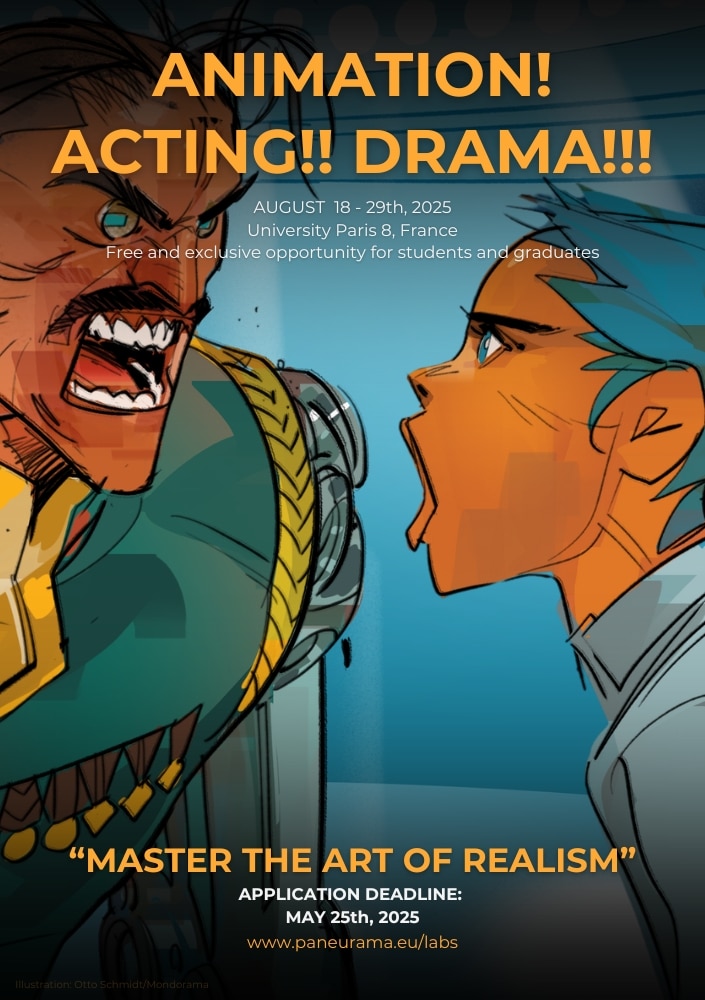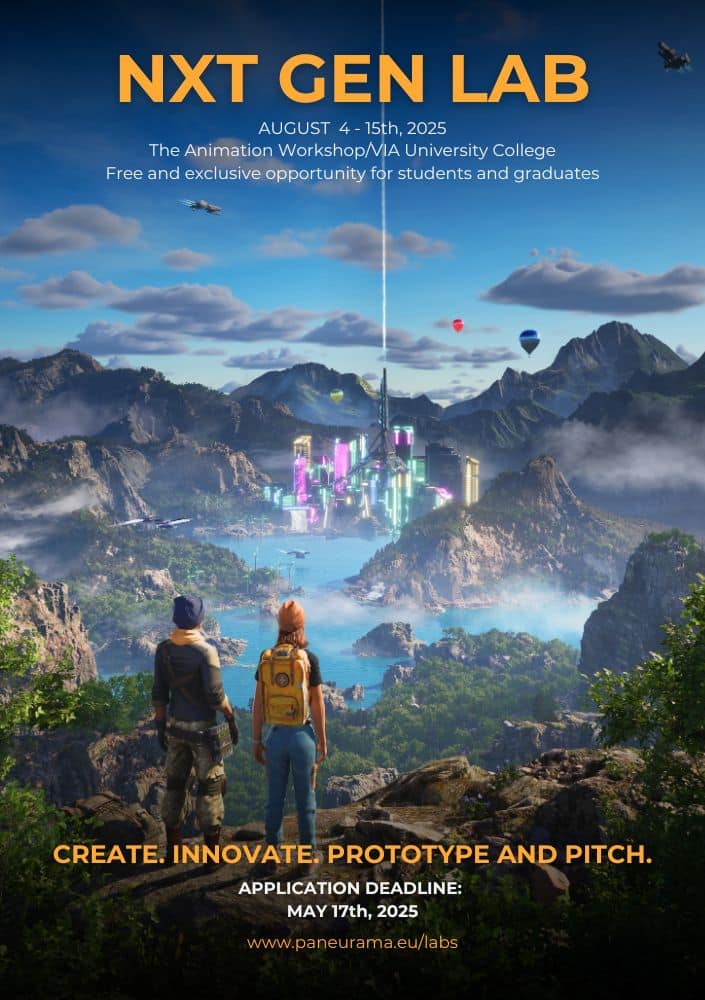We asked our team from the PANEURAMA project to briefly introduce themselves, share the areas they are working on, and respond to some questions addressing current challenges and opportunities in the industry.
We hope you will enjoy reading their insights. The interviewees are Mata Haggis-Burridge, Silke Hassreiter, and Tuki Clavero from Breda University of Applied Science in The Netherlands.

Mata Harris-Burridge
Professor of Creative and Entertainment Games
@Breda University of Applied Science

Silke Hassreiter
Researcher in Creative and Entertainment Games
@Breda University of Applied Science

Tuki Clavero
Senior Researcher in Creative and Entertainment Games
@Breda University of Applied Science
Q: Can you provide a brief overview of yourself, your professional experience, and the institution you work in?
The BUas team is led by three researchers: Prof. Mata Haggis-Burridge, Silke Hassreiter, and Tuki Clavero. Their decades of experience span professional media and video game development, curriculum development, and research into emerging technologies. Alongside industry and teaching experience, they have expertise in qualitative research methodology, workplace ethnography, and more.
Q: In recent years, what do you consider the most significant changes within creative digital education? How has it affected your institution? Could you give some examples?
Interdisciplinary Collaboration and Knowledge:
Creative digital education has seen a strong shift towards more interdisciplinary collaboration with the need for staff with diverse skillset and knowledge from various disciplines. This shift can be also seen at Universities of Applied sciences in the Netherlands, including Breda University of Applied Sciences, where there is greater emphasis placed on practical, hands-on experiences through project-based learning. This approach allows students to work on actual projects, simulating professional environments and enhancing their practical interdisciplinary skillset. The interdisciplinary skillset is even further fostered in the first attempts to create projects for students beyond disciplines, having hotel management students work with leisure students and creative business and game students on one project.
Multicultural communication skills and soft skills emphasis:
Recognizing the industry’s demand for stronger multicultural communication skills, BUAS’ educational approach involves project work with international staff, students, and clients. This strategy aims to foster confidence in students working in international teams for international clients, enabling them to navigate diverse cultural perspectives effectively while working on creative products. Assessment criteria, particularly in teamwork, production content, and imagined audience, now integrate cultural sensitivity considerations. Furthermore, BUAS curricula place significant emphasis on developing a great range of soft skills, like teamwork, adaptability, and flexibility to not only ‘produce’ graduates that have the necessary expertise but are also equipped with interpersonal skills necessary in a dynamic and quickly changing work environment. The guiding principle in curriculum development teams is centered around shaping ‘the well-rounded creative professional’.
Q: What, in your opinion, are the primary challenges currently faced by creative digital education, and how is it affecting your institution? Could you give some examples?
Discussions on inclusion and equality are recurrent within the framework of both the work environment and the creation of creative products at BUAS. Addressing the challenges faced by educational staff, there is an ongoing effort to prepare students for the demands of a high-paced, demanding work environment characterized by long hours and a strong hierarchical structure. Simultaneously, the educational approach aims to raise awareness among students about alternative work practices to mitigate the risk of burnout and foster a healthier work-life balance. This dual focus on readiness for industry demands and cultivating an understanding of diverse work practices reflects BUAS’ commitment to nurturing well-prepared and resilient graduates.
The emphasis on inclusion, equality, and fostering intercultural teamwork is increasingly crucial, albeit challenging, within an educational context that readies students for an undeniably international industry. This challenge is compounded by the educational field’s integration into a country’s set of policies, where recent developments, such as the election outcomes in The Netherlands, may amplify discussions around policies advocating for ‘only Dutch-speaking students at Dutch-speaking universities.’ Striking a balance between international industry preparation and adherence to national policies requires careful consideration and adaptability in navigating evolving socio-political landscapes.
Q: Could you please identify the most significant opportunities for creative digital education and possible ways to address them?
Digital media speaks across boundaries – internationally, but also across ages, classes, abilities, and more. By enabling our students with education related to the latest technologies, built on a foundation of ‘traditional’ industry-standard core knowledge and skills, we believe that students can be ready to adapt and grow with the changing workplaces of the future. Topics such as generative AI, virtual production, and new business models show that the coming decades will need creatives with flexible mindsets. Furthermore, we believe that it is very important to support student’s lifelong learning and professional development, by exposing them to the latest trends and developments in the digital media industry, and by facilitating their networking and mentoring opportunities with experts and peers. Additionally, we consider it crucial to nurture students’ critical and ethical awareness regarding the social, cultural, and environmental implications of digital media. Our commitment extends to empowering them to use digital media responsibly and respectfully. This focus has been important in the past, and as new technologies emerge, we believe it is becoming increasingly critical to prepare students for the ethical challenges associated with these advancements.
Q: What do you think are the most important hard skills in the area of creative digital education in which you are working?
Digital Media Production: These are skills that enable the creation of digital media products, like video games, animations, short film productions, etc. They include skills such as programming, graphic design, audio editing, video editing, web development, etc. The development of these skills also requires proficiency in several digital media tools and platforms, such as Unity, Unreal Engine, 3D software, Audacity, among many, many others. Other skills working in tandem with the previously mentioned skills include understanding the principles and techniques of digital media design like UX and UI, game design, storytelling, etc.
Digital Media Analysis: Skills that enable the evaluation and interpretation of digital media products. These are skills such as data analysis, content analysis, market research, user testing, etc. Important hard skills in these areas require the ability and knowledge to collect, process, visualize, and communicate data from various sources. As well as understanding theories and frameworks of digital media studies and incorporating media literacy.
Other skills: Communicating with different audiences and for different purposes, writing, presenting, and collaborating.
Q: What advice could you give to industry professionals to foster closer collaboration and partnership with educational institutions? Could you share some examples?
Opening up for teaching staff internships:
Implementing sabbatical semesters for teaching staff as a strategic approach could help revive, rebuild, and foster educators’ ties to the industry, especially in the aftermath of COVID-19 where many connections dried out due to reduced or predominantly online interactions. During these dedicated periods, educational staff could be granted the time to actively engage in industry and academic conferences, where they can present their work, participate in discussions, and stay up to date of the latest developments. Condensing ‘development hours’ into one semester every few years offers a more impactful utilization of these hours, enabling educational staff to focus on continuous professional development rather than using these hours annually for catch-up tasks such as grading and course preparation. This restructuring ensures that educators can truly immerse themselves in professional growth and stay at the forefront of advancements in their field.
Q: What do you think creative digital educational institutions should focus more on to better prepare young artists for their careers?
To better prepare young artists for their careers, creative digital educational institutions should place increased emphasis on fostering self-care and nurturing effective teamwork.
Q: What do you think are the most important soft skills needed for students and graduates who are going to work in creative digital industries? Could you give some advice on how to develop them?
Organisation: Capacity to effectively and efficiently plan, prioritise, and manage time, tasks, and resources. To foster this skill students could be taught to use project management tools and techniques. As well as how to establish achievable and specific objectives and milestones in solo project and in team-based projects.
Conflict Management: The ability to handle and resolve conflicts and disagreements in a way that promotes a constructive and respectful approach. To cultivate this skill with students, they can be engaged in practicing active listening, engaging in negotiations, finding compromises, taking responsibilities for their actions, and recognising and pursuing mutually beneficial outcomes.
Initiative: The ability to take action, seize opportunities, and show leadership without being told or asked. Demonstrating proactivity and self-reliance. To develop this skill, students should be encouraged to seek feedback from teachers, peers, and mentors. Inspire students to join extracurricular projects and activities that are related to their field of interest and study.
The teaching staff can facilitate the development of initiative by recognizing and incentivizing their endeavors, establishing a nurturing and cooperative learning environment, and culture of trust, and engaging and empowering them with practical challenges and available resources. The teaching staff can also provide the students with access to mentors, experts, and peers who can offer them advice, guidance, and inspiration.

